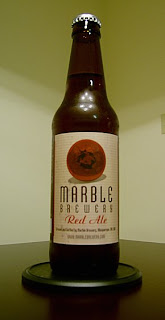The word lager is actually German for storage. Using primitive storage techniques, lager beer came to be through the hybridization of ale yeast during longer storage periods in colder temperatures. The lager yeast is able to slowly consume more of the sugars causing the variance in taste between lager and ale. Lagers come in all shapes and sizes. Traditional European lagers range form the lightest Euro pale lagers, the flavorful Czech Pilseners to the powerful German Doppelbocks. American lagers range from the barely there Adjunct style, Czech inspired hoppy Pils, to the darker Dunkels and Bocks. While I give most popular American Lagers 3 enthusiastic thumbs down, there are a few seriously good domestically produced "true" American lagers. One of which I feel truly embodies the American values of ingenuity, determination, and perfectionism. It's called Anchor Steam.
In the late 19th century keeping things cold in California was difficult. Air conditioning was a hand powered paper fan and refrigeration was known as January. The brewers making lager beer had to find a way to cool the wort rapidly by natural means. This was done by piping the hot liquid to open roof panels to let the ocean breezes act as the cooling agents. This created puffs of steam atop the breweries giving the beer its name. After the cooling was finished the lager yeasts were forced to ferment at the coolest tip of the ale scale. This process of using lager yeast at ale temperatures created beer that tastes like no other. Although the Steam beer made nowadays uses a cooling system that has been drastically modernized, some of the time honored traditions hold strong. The use of all malt mash and copper pot boiling let Anchor stand tall and show the world what real American brewing is all about.
This is easily one of my top three lagers. It is a beautiful crisp lager with deep ale complexity. A nice smooth copper pour unloads a forest of a nose. A fascinating smell of earthy tree bark with slightly fruity hop combined with a understated deep toasty malt. The flavor is identical. Initial floral hop bitter balances quickly with a warm white bread malt. The balance is uncanny for the individual flavors are quite robust. The floral esters of hop and the slightly sweet grainy malt are simultaneously unified mid palate just before the closing hop fermata. 10 Tie-dye shirts out of 7. The beer is light enough to drink more than one but flavorful enough to nurse for appreciation. Serve slightly warmer than most lagers for best flavor. Steak or lamb will pair vary nicely with a good strong veggie like asparagus or Brussels sprouts. Find some shade and enjoy the weather.
cheers


